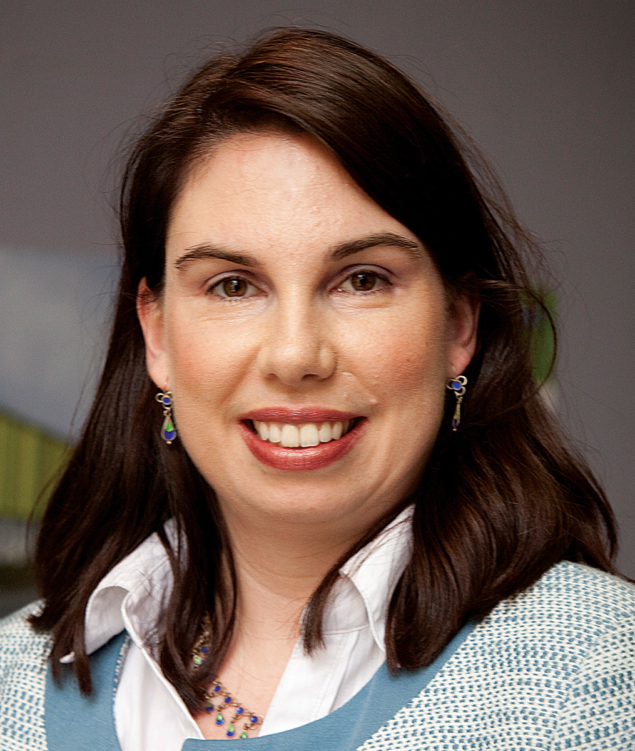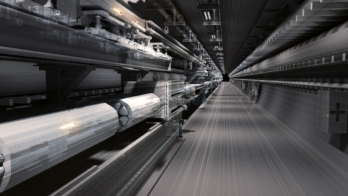In addition to designing bold experiments, particle physicists must adopt new environmental practices to sustain the field into the next century, says Véronique Boisvert.

There has been a marked increase in awareness about climate change in society. Whether due to the recent school strikes initiated by Greta Thunberg or the destructive bushfires gripping Australia, the climate emergency has now moved up in the public’s list of concerns. Governments around the world have put in place various targets to reduce greenhouse-gas emissions as part of the Intergovernmental Panel on Climate Change (IPCC) 2015 Paris agreement. The scientific community, like others, will increasingly be expected to put in place measures to reduce its greenhouse-gas emissions. It is then timely to create structures that will minimise the carbon footprint of current and future experiments, and their researchers.
The LHC uses 1.25 TWh of electricity annually, the equivalent of powering around 300,000 homes, or roughly 2% of the annual consumption of Switzerland. Fortunately, the electricity supply of the LHC comes from France, where only about 10% of electricity is produced by fossil fuels. CERN is adopting several green initiatives. For example, it recently released plans to use hot water from a cooling plant at Point 8 of the LHC (where the LHCb detector is situated) to heat 8000 homes in the nearby town of Ferney-Voltaire. In 2015, CERN introduced an energy-management panel and the laboratory is about to publish a wide-ranging environmental report. CERN is also involved in the biennial workshop series Energy for Sustainable Science at Research Infrastructures, which started in 2011 and is where useful ideas are shared among research infrastructures. Whether it be related to high-performance computing or the LHC’s cryogenic systems, increased energy efficiency both reduces CERN’s carbon footprint and provides financial savings.
It is a moral imperative for the community to look at ways to reduce its carbon footprint
In addition to colliders, particle physics also involves detectors, some of which need particular gases for their operation or cooling. Unfortunately, some of these gases have very high global-warming potential. For example, sulphur hexafluoride, which is commonly used in high-voltage supplies and also in certain detectors such as the resistive plate chambers in the ATLAS muon spectrometer, causes 16,000 times more warming than CO2 over a 20-year period. Though mostly used in closed circuits, some of these gases are occasionally vented to the atmosphere or leak from detectors, and, although the quantities involved are small, it is likely that some of the gases used by current detectors are about to be banned by many countries, making them very hard to procure and their price volatile. A lot is already being done to combat this issue. At CERN, for instance, huge efforts have gone into replacing detector cooling fluids and investigating new gas mixtures.
Strategic approach
The European particle-physics community is currently completing the update of its strategy for the next five years or so, which will guide not only CERN activities but also those in all European countries. It is of the utmost importance that sustainability goals be included in this strategy. To this end, myself and my colleagues Cham Ghag and David Waters (University College London) and Francesco Spano (Royal Holloway) arrived at three main recommendations on sustainability as input into the strategy process.

First, as part of their grant-giving process, European laboratories and funding agencies should include criteria evaluating the energy efficiency and carbon footprint of particle-physics proposals, and should expect to see evidence that energy consumption has been properly estimated and minimised. Second, any design of a major experiment should consider plans for reduction of energy consumption, increased energy efficiency, energy recovery and carbon-offset mechanisms. (Similarly, any design for new buildings should consider the highest energy-efficiency standards.) Third, European laboratories should invest in next-generation digital meeting spaces including virtual-reality tools to minimise the need for frequent travel. Many environmental groups are calling for a frequent-flyer levy, since roughly 15% of the population take about 70% of all flights. This could potentially have a massive effect on the travel budgets of particle physicists, but it is a moral imperative for the community to look at ways to reduce this carbon footprint. Another area that the IPCC has identified will need to undergo a massive change is food. Particle physicists could send a very powerful message by choosing to have all of its work-related catering be mostly vegetarian.
Particle physics is flush with ideas for future accelerators and technologies to probe deeper into the structure of matter. CERN and particle physicists are important role models for all the world’s scientific community. Channelling some of our scientific creativity into addressing the sustainability of our own field, or even finding solutions for climate change, will produce ripples across all of society.





